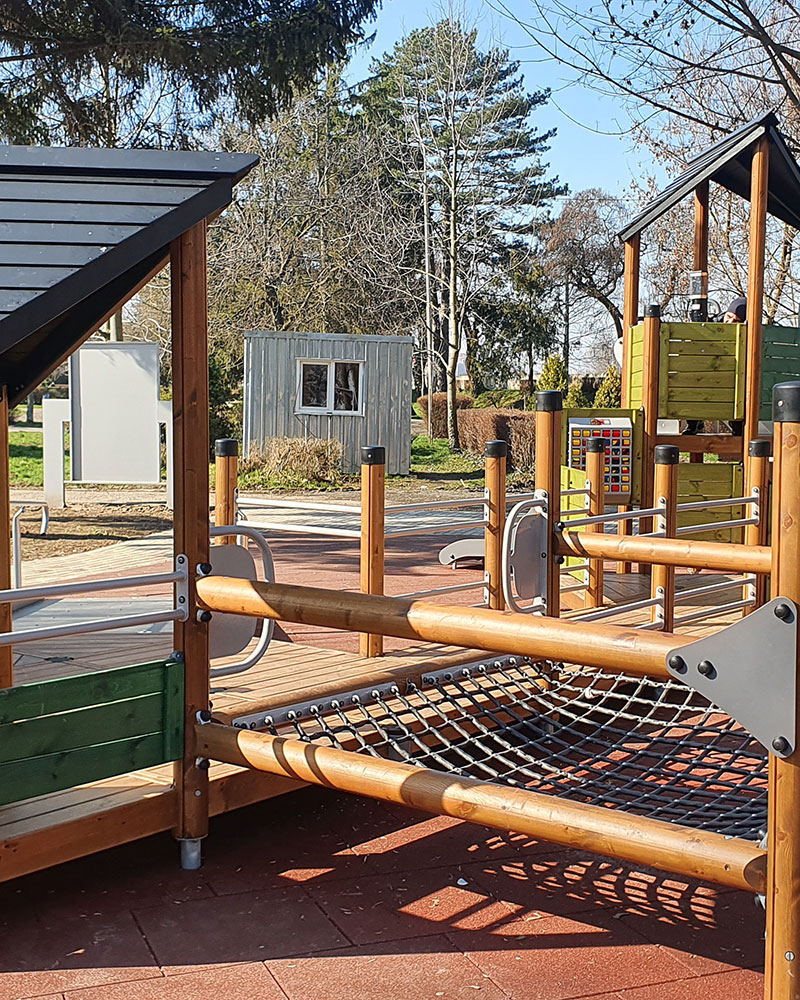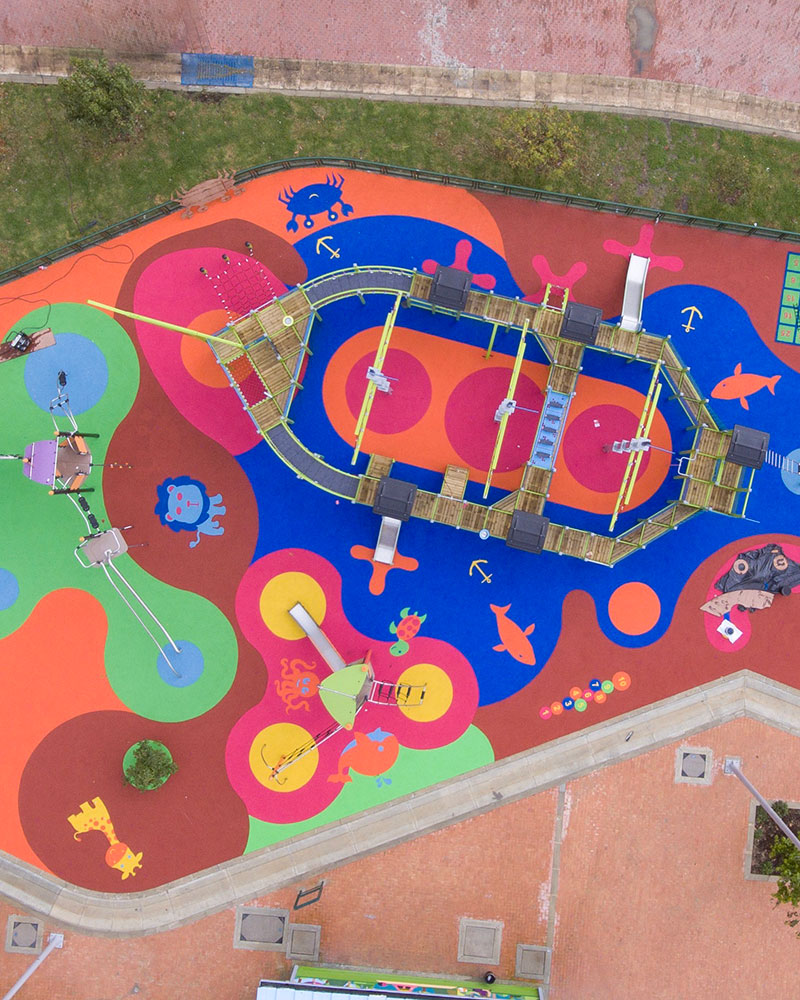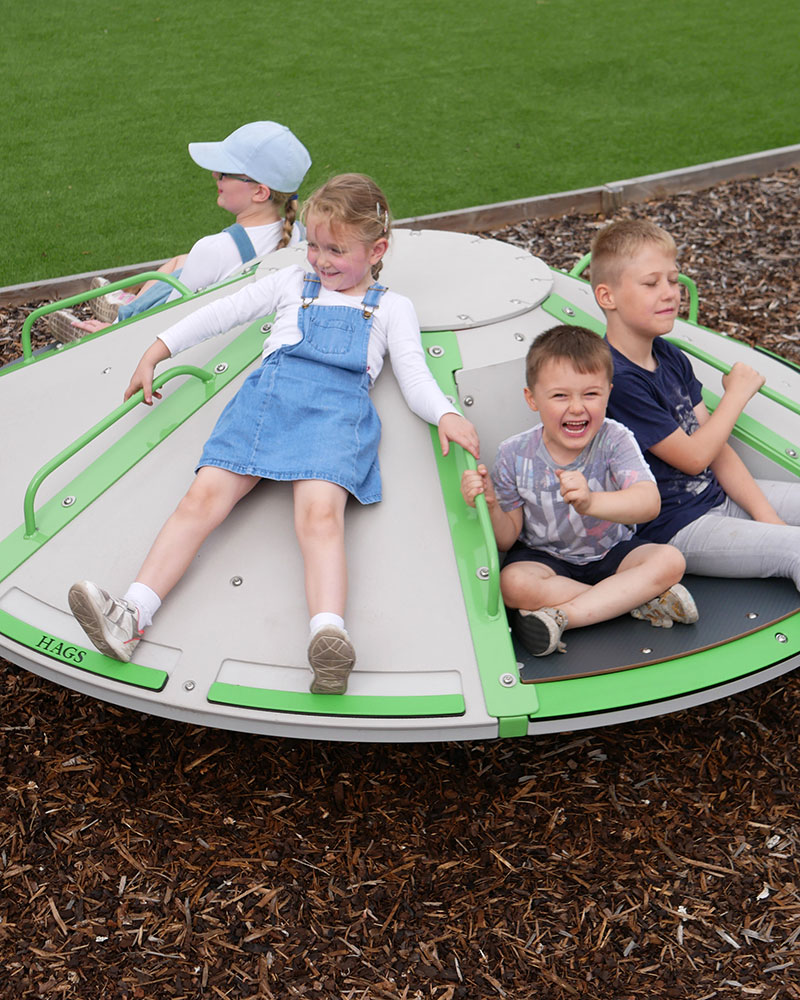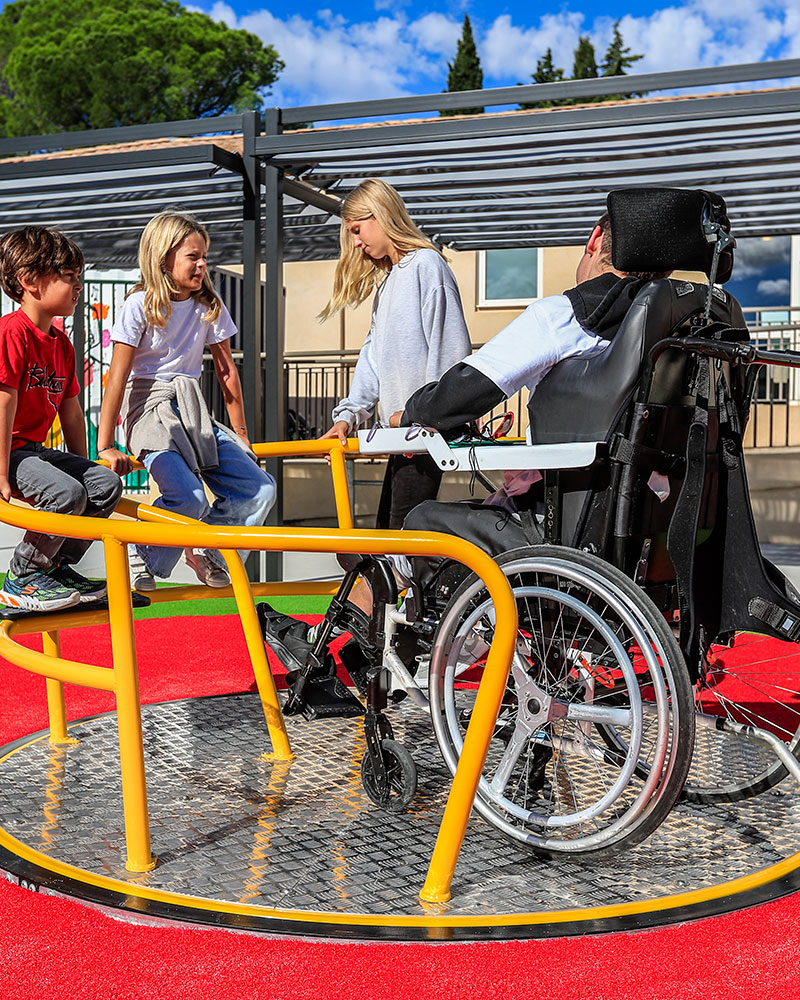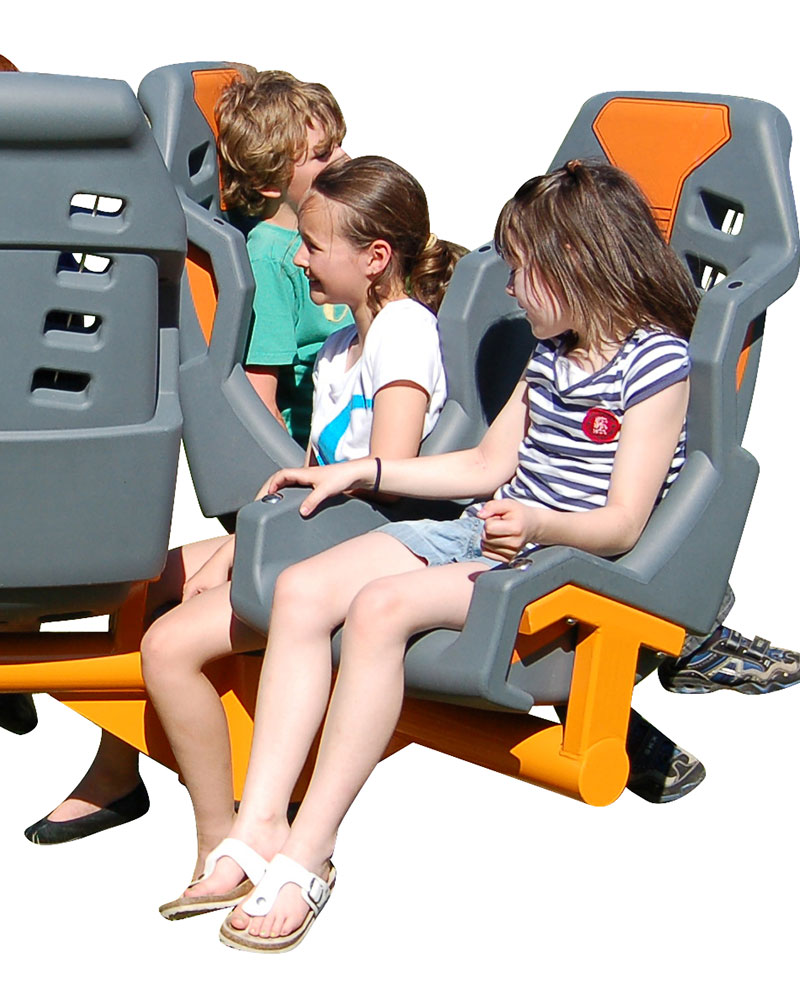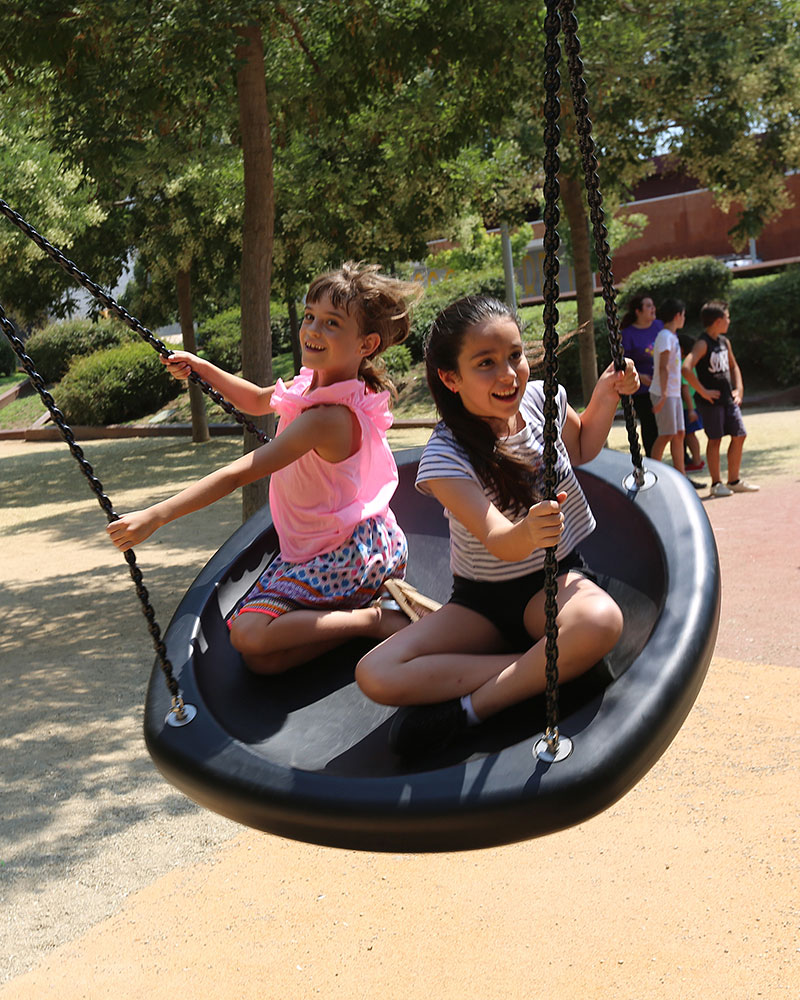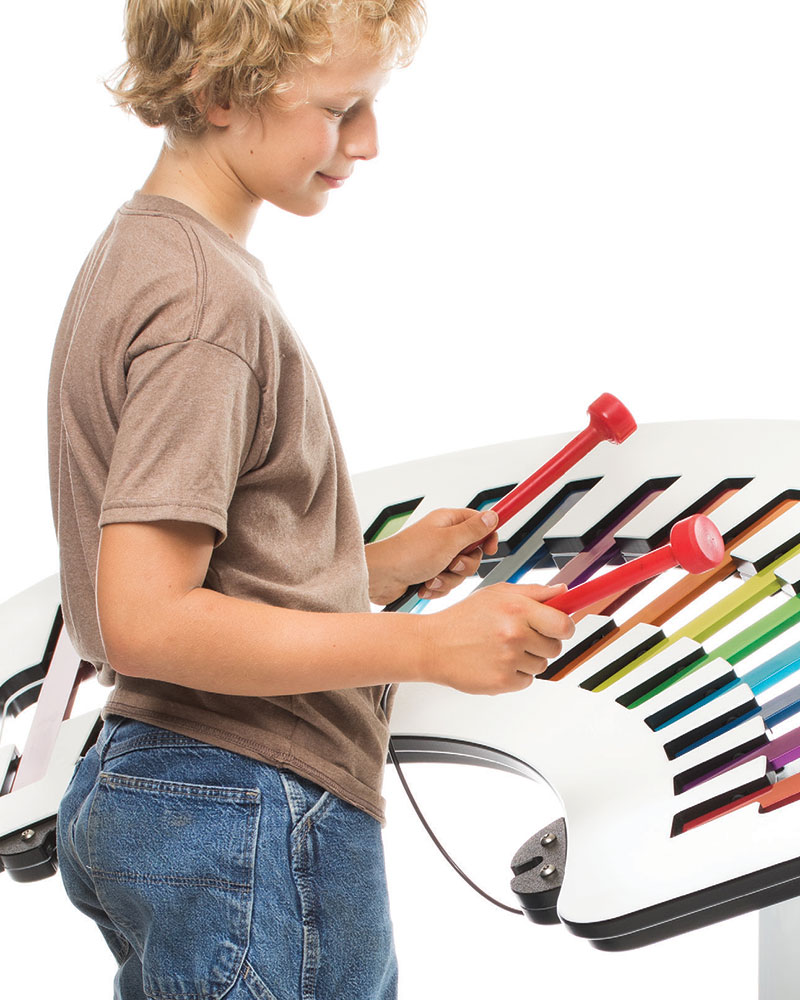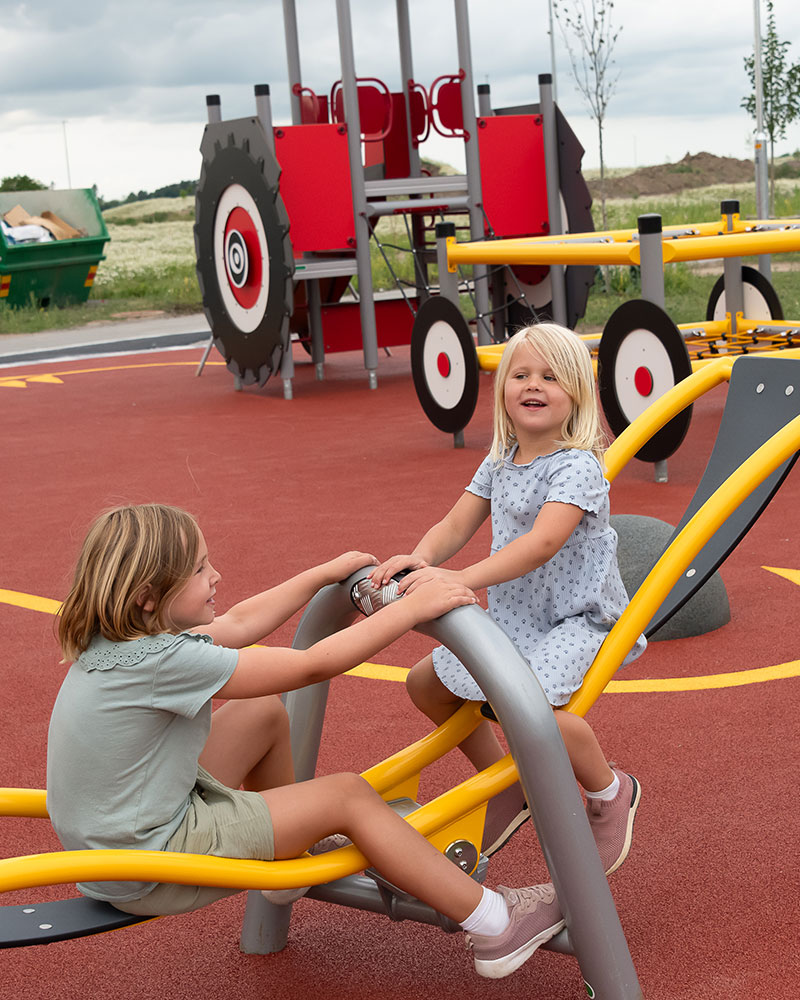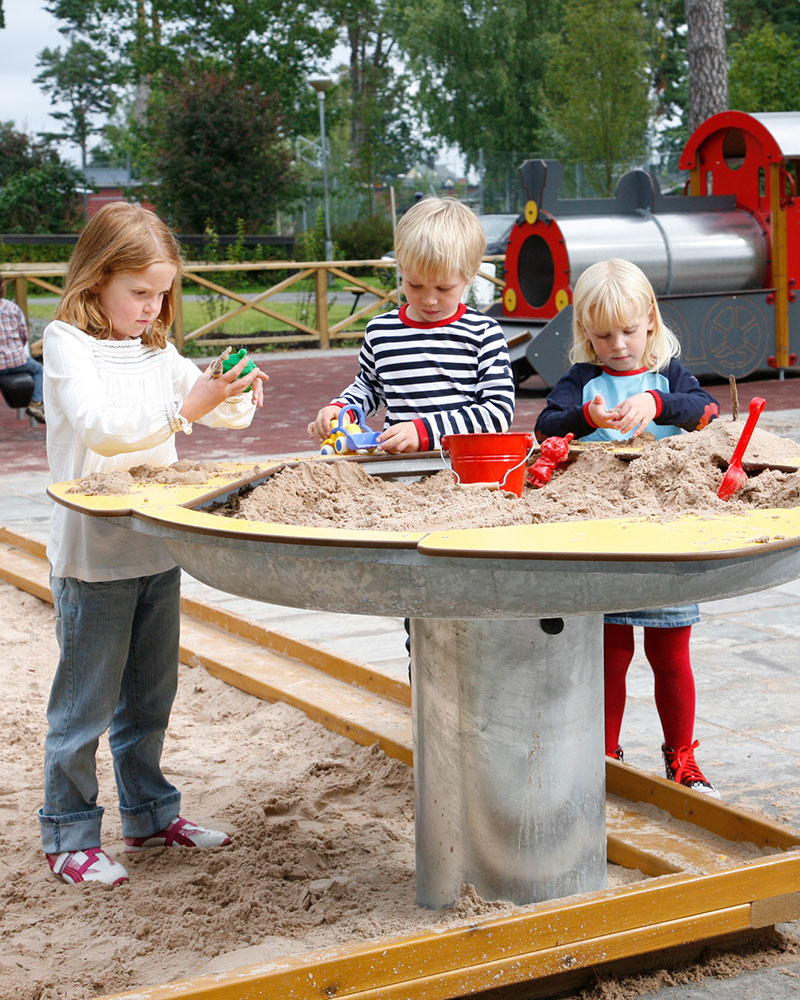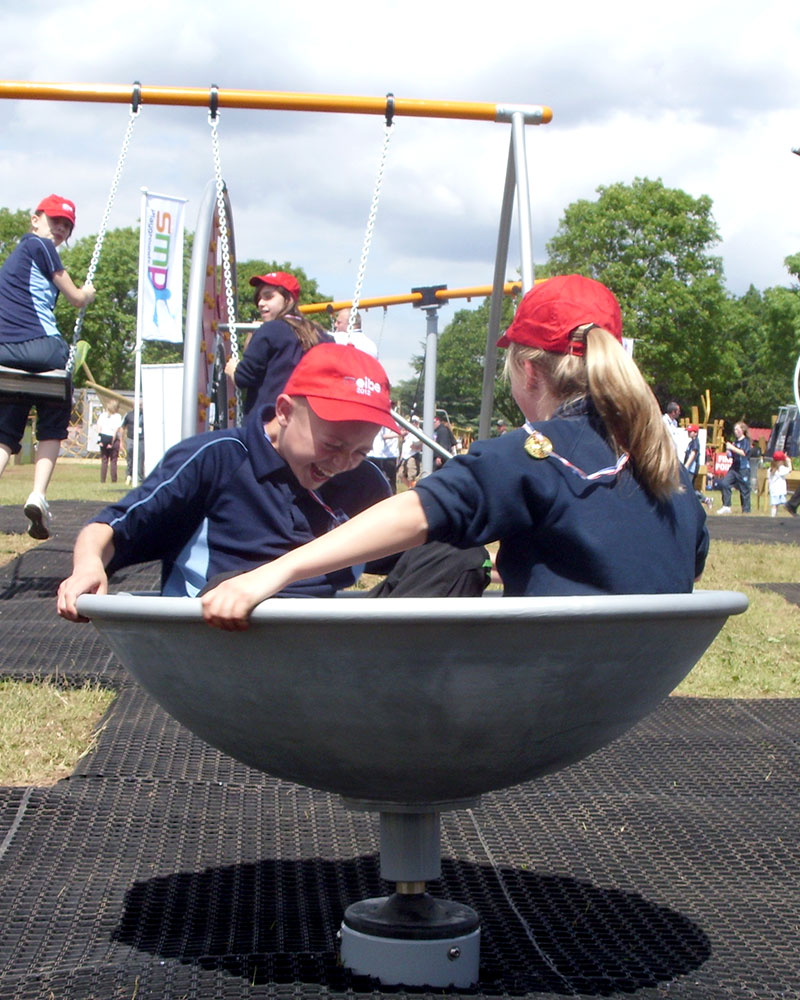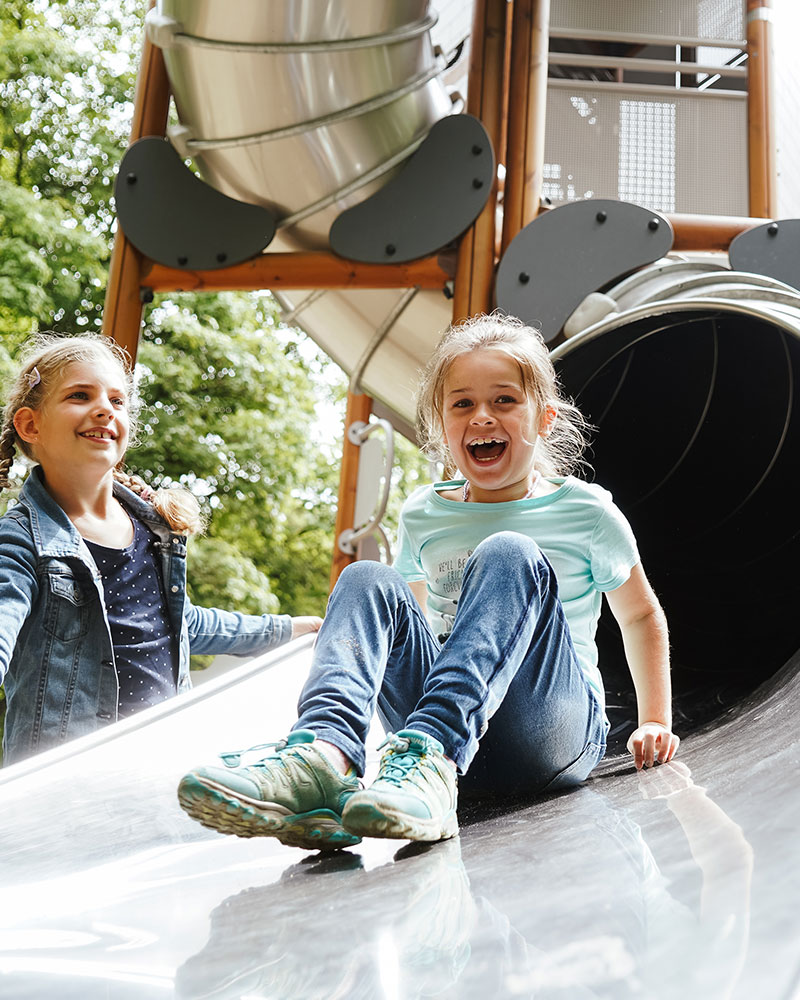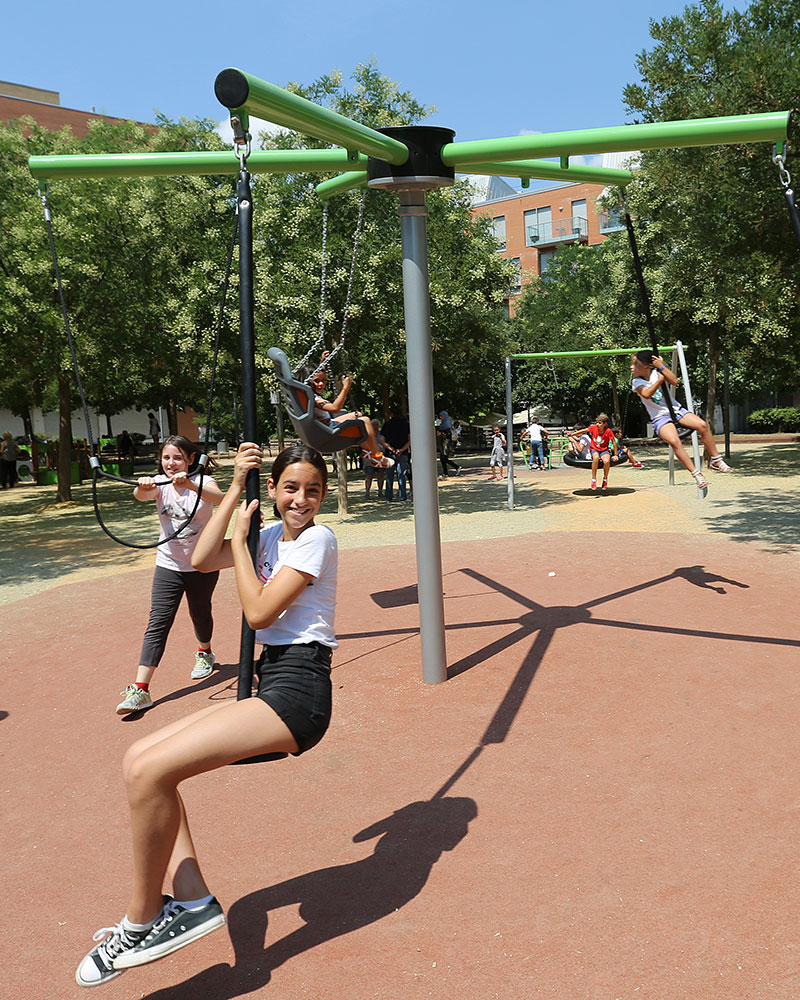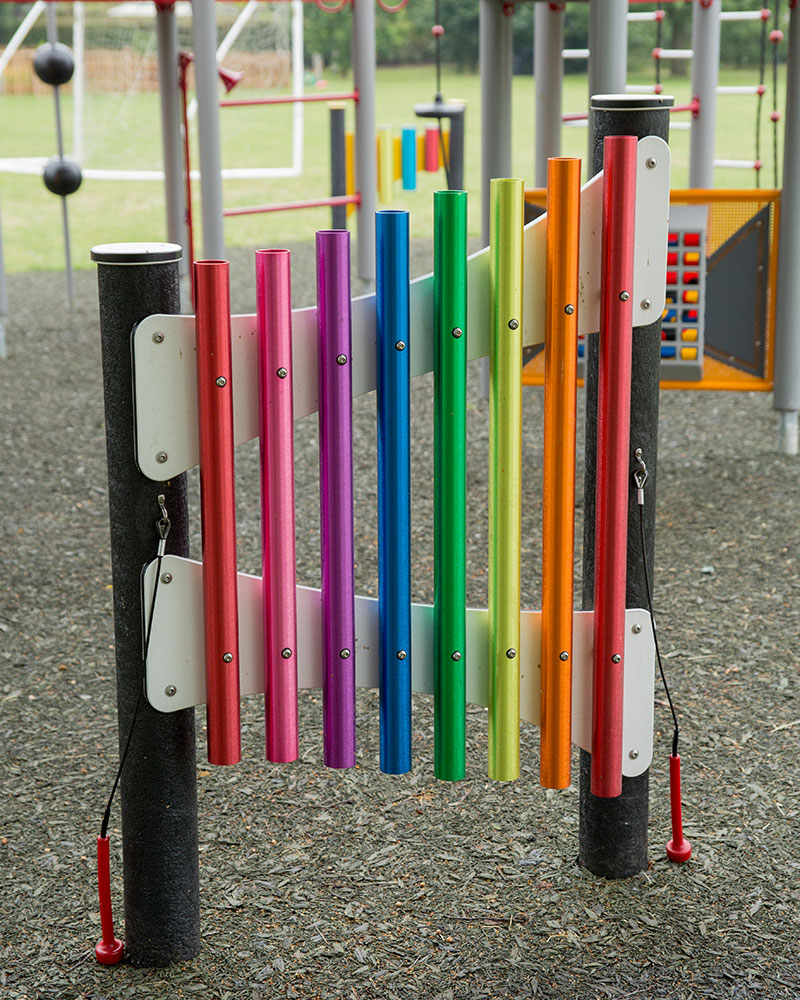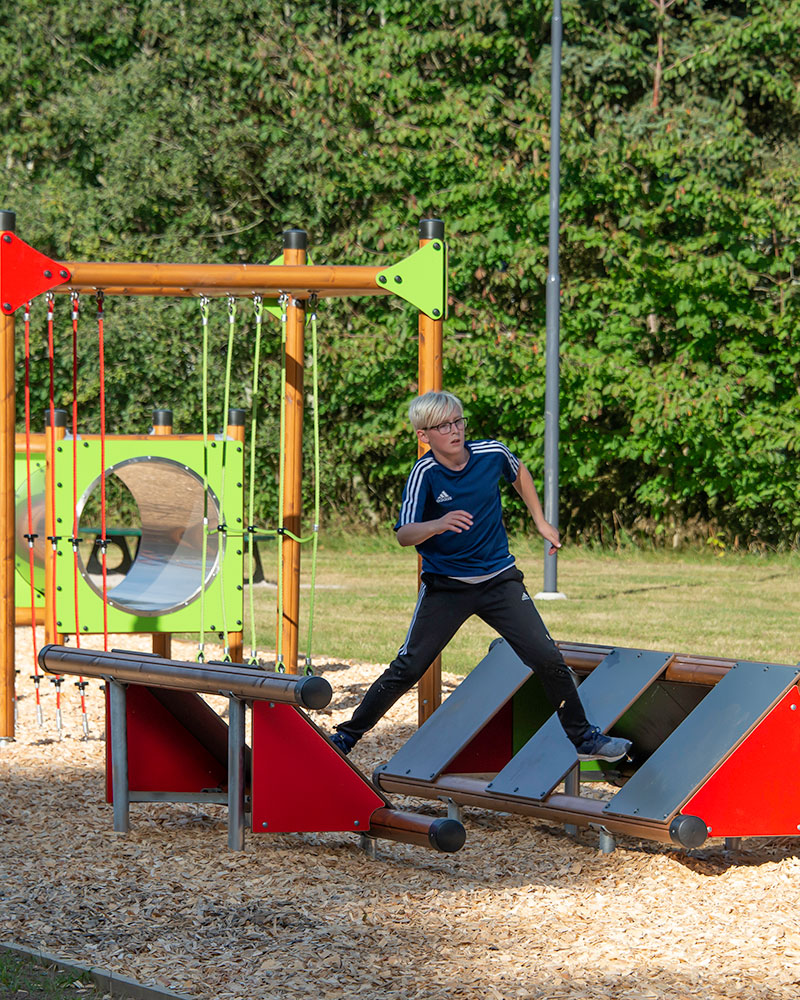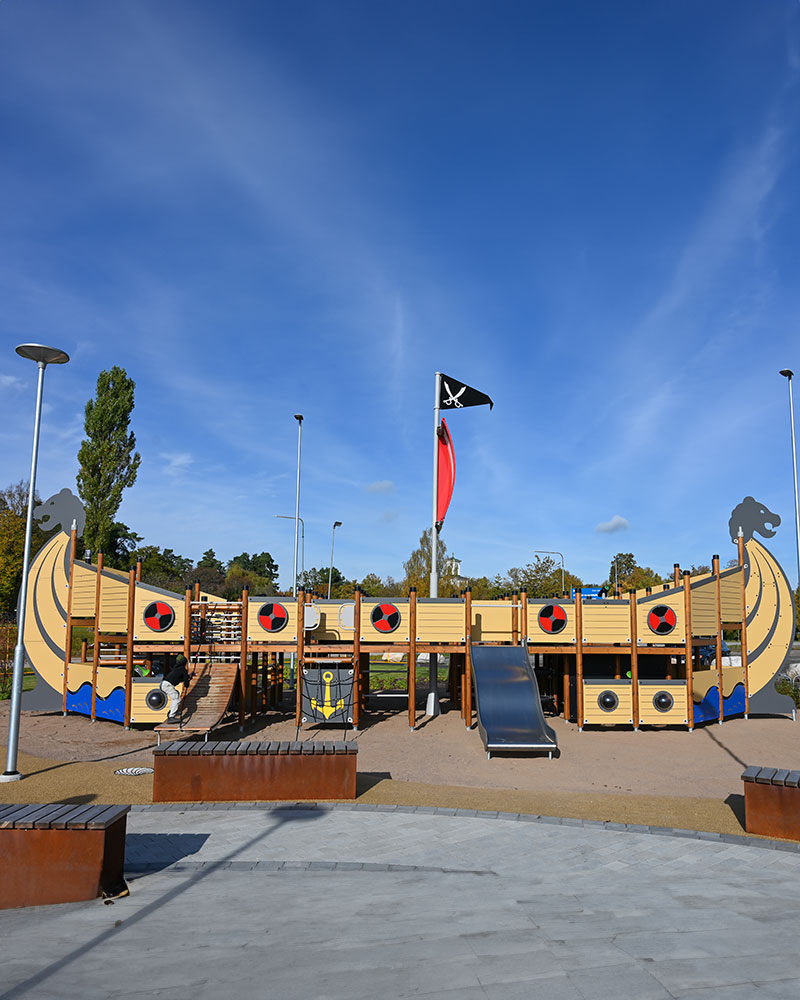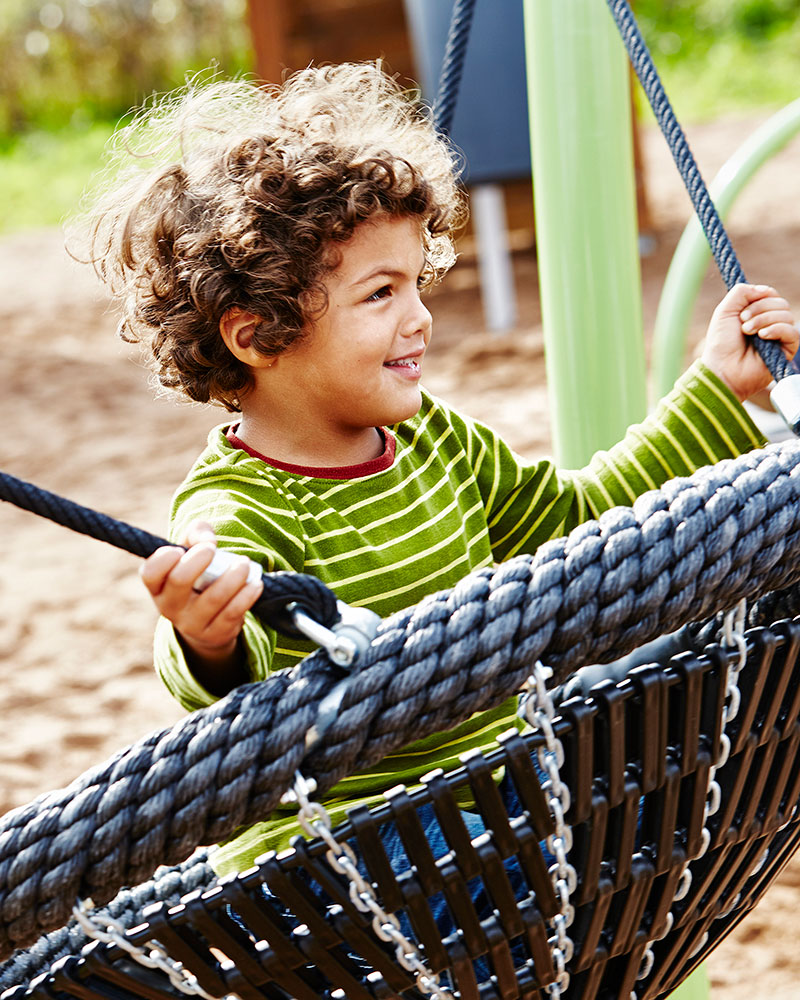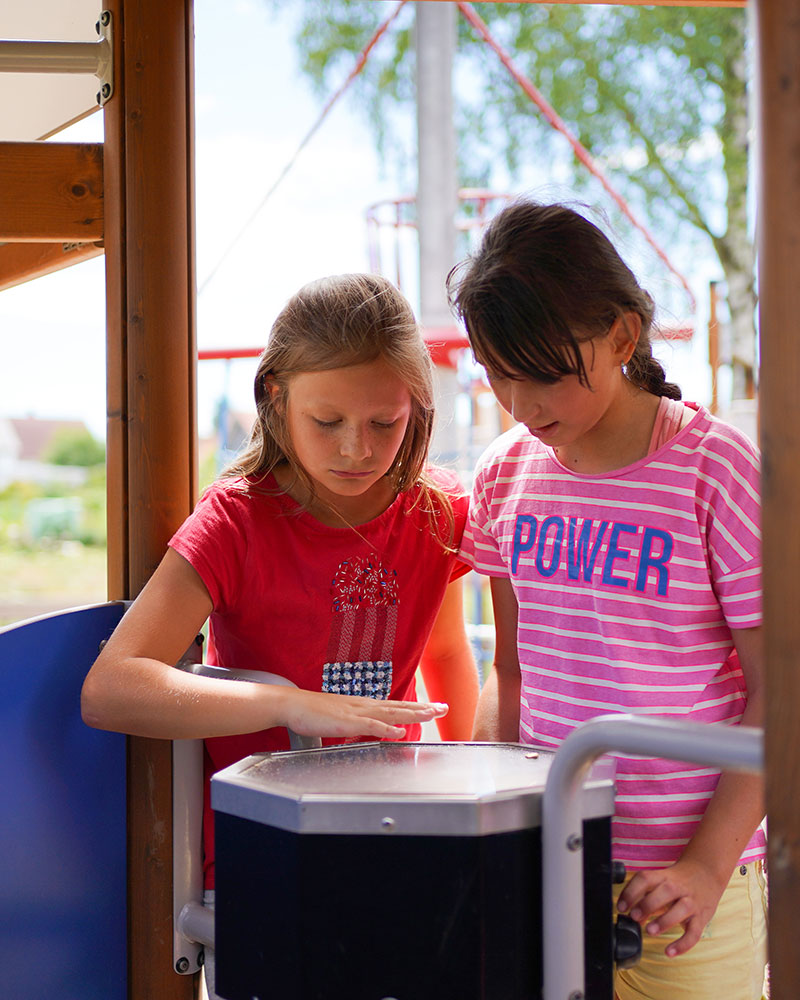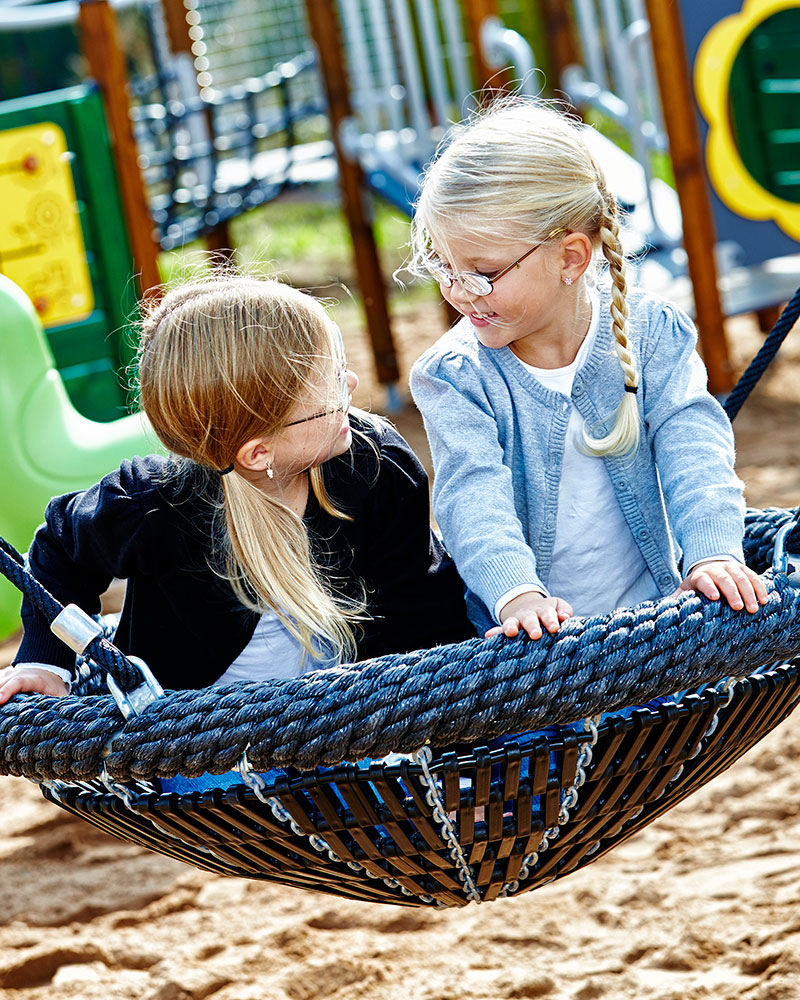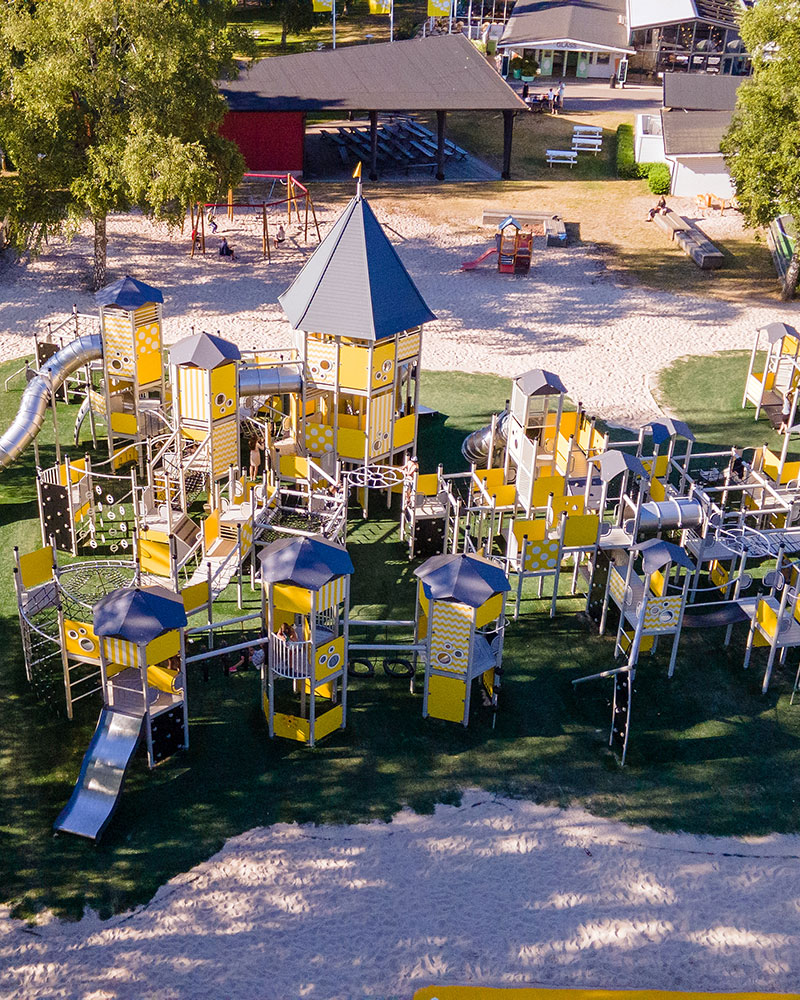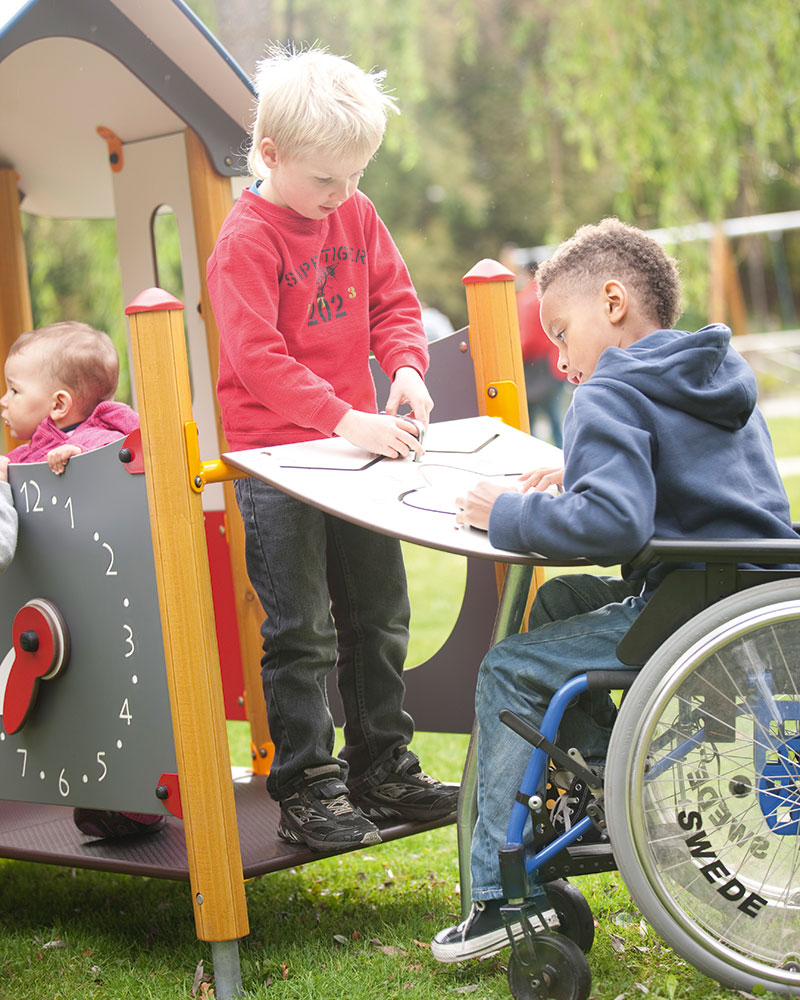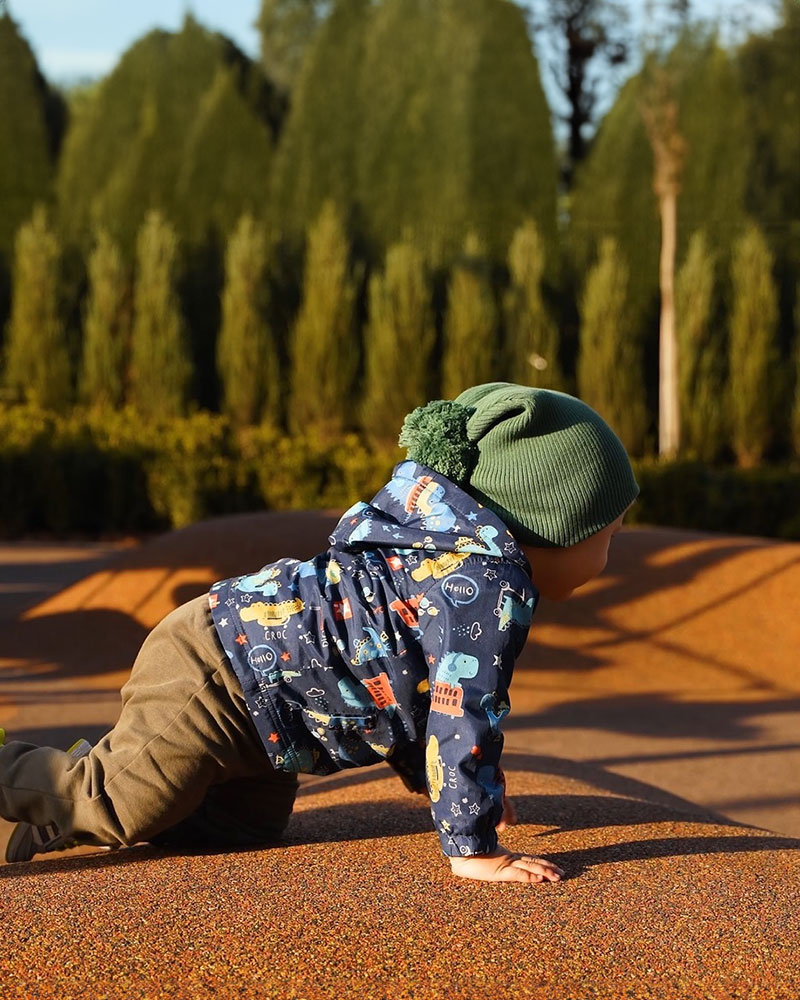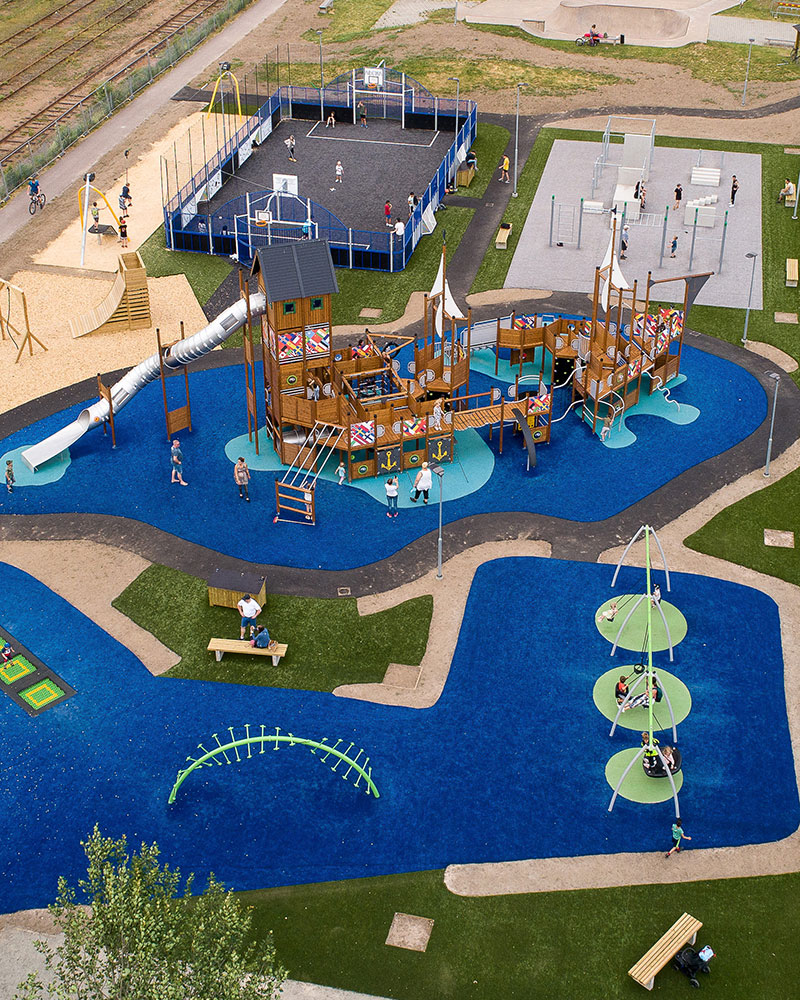How to select equipment for an inclusive playground
It is important to make conscious and well thought out decisions when determining the types of equipment and play features to include in your inclusive playground and where to place them. In this part of the guide we discuss the selection of play equipment to maximize inclusive experiences on the playground.
Provide children with elevated play
Children love the experience of height, so it's important to provide elevated play areas in playgrounds. Being high offers a unique experience of the elements and a sense of achievement and wonder, which some children might not otherwise experience. Include high play value activities on the highest platforms, such as periscopes, musical instruments, and play panels, that can be enjoyed by children of all abilities.
Ensure the highest slide is accessible via a ramp system or contoured path. At each platform, include at least one additional activity besides the slide or climber. Place activities at varying heights to accommodate different reach ranges, such as periscopes, talk tubes, auditory activities, pulley systems, and activity panels that encourage group play.
Ways to elevate play experiences
A playground should encourage children of the same age but different abilities to play together. Co-locate similar equipment types and offer multiple ways to engage in activities at different challenge levels, such as balancing, climbing, spinning, or swinging. Use equipment with graduated challenge levels, so children can progress as they master each level. Examples like UniMini and UniPlay feature decks attached to climbing units of varying difficulty, promoting inclusive play.
Choose play activities with graduated challenge levels to engage children of all ages and abilities. For each type of physical play, select pieces with varying difficulties and place them accordingly. Use ground-level patterns for the easiest challenges and equipment requiring advanced motor planning for the most difficult.
It’s a good idea to provide a resting point close to the exit of a slide so that there is somewhere to wait if a wheelchair or mobility aid is being brought down from the top. Consider placing a seat with back support at the outside edge of the use zone for the slide, this will keep the child safe, preserve their dignity and reduce the distance they need to be carried.
Use color on surfacing and play equipment to aid children with low vision, providing contrast for steps and other features. Design the color palette carefully to avoid overstimulation or confusion, considering muted, natural, pastel, monochrome, contrasting, and complementary colors. Avoid shiny, reflective surfaces and choose matte finishes instead. Alternate or contrast colors on decks and steps to indicate where to step, and use high-contrast colors, like yellow, for hand grips against contrasting backgrounds. Avoid preconceived ideas about which colors children prefer.
Ensure that the most exciting play activity in the playground is accessible and usable for all children. Identify the play equipment that will generate the most excitement and make sure it is inclusive. For example, the best slide should have ramps and easy transfer points, a web net should be easy to use at ground level and more challenging higher up, and water play should allow children to control their engagement with the sensation. This prevents exclusion and ensures all children can participate in the most popular activities.
Examples of play equipment for various impairments or conditions
Each impairment or condition varies widely, so individual needs may differ even with the same diagnosis. Here are some common impairments or conditions in school-age children, with brief descriptions and playground equipment suggestions that might be beneficial.
We offer a wide range of inclusive playground equipment suitable for children with different impairments or conditions. Contact our team for advice on the best equipment to meet user needs.
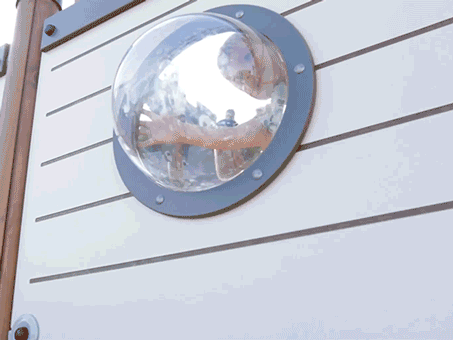
Autism/Sensory Processing Disorder
Autism is a lifelong developmental disability affecting communication, relationships, and sensory experiences. Children with autism may seek or avoid sensory input and have trouble with balance and spatial awareness.
Include sensory equipment, vestibular and proprioceptive activities, balancing tasks, and activities that promote cooperation and socialization in playgrounds.
Spina Bifida
Spina Bifida is a condition where the spine and spinal cord don't develop properly in the womb, often leading to mobility issues. Children with Spina Bifida may use a wheelchair or walk with support and usually have normal intelligence, though some have learning difficulties.
Recommended activities should develop upper body strength, spatial awareness, balance, and fine motor skills while encouraging play and socialization.
Popular product examples you could include
Cerebral Palsy
Cerebral Palsy is a condition affecting muscle control and movement, often due to brain injury before, during, or after birth. It can be accompanied by learning difficulties, epilepsy, hearing impairments, communication issues, toileting problems, and behavior issues. The condition varies, affecting muscles differently and impairing balance, posture, and coordination. Many children use mobility aids.
Include equipment with strong support, sensory and social activities, and features that promote communication skills.
Popular product examples you could include
Down’s Syndrome
Down’s Syndrome is caused by an extra chromosome, leading to varying degrees of learning disability and delayed development. Children with Down’s Syndrome may take longer to learn skills like sitting, standing, walking, and talking. About 10% also have conditions like autism or ADHD. Common issues include heart and bowel problems, hearing and vision difficulties, and higher infection risk.
Include equipment that offers physical, sensory, and cooperative opportunities, and provide supportive equipment to accommodate low muscle tone.
Popular product examples you could include
Attention Deficit/Hyperactivity Disorder
Children with ADHD are easily distracted, impulsive, and struggle with focusing, sitting still, planning, and social interactions. They often have vivid imaginations and benefit from creative activities. Outdoor settings, like open fields and parks, help reduce their symptoms.
Emphasize aerobic activities, pretend play, and nature play, and design playgrounds with ample open green space. Research shows that 30 minutes of exercise can improve focus and mood management for kids with ADHD.
Popular product examples you could include
Learning Disabilities
A learning disability affects how a person learns, understands information, and communicates. Children with learning disabilities may struggle with new or complex information, learning new skills, and coping independently. These disabilities can range from mild to severe.
Include sensory activities and activities that encourage cooperative and social play.
Popular product examples you could include
Visual Impairment
Visual impairment involves a functional loss of vision and includes partially sighted, low vision, legally blind, and totally blind categories. Children with visual impairments enjoy sensory items like tactile, nature, and sound features.
Use devices that trigger audible information and design with yellow and high-contrast colors for better visibility. Avoid dark colors in surfacing and shiny, reflective surfaces.
Popular product examples you could include
Designing an inclusive playground
Designing for inclusion requires thoughtful integration of play values and accessibility. The following sections highlight key elements to consider when creating an inclusive play space. This guide is flexible, allowing designers to prioritize certain aspects and develop custom strategies to best meet users' needs.
Explore the pages below to help you plan and design an inclusive playground.



